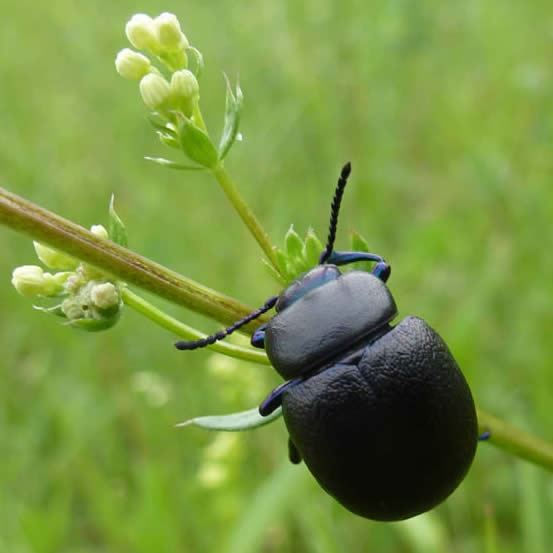Dordogne bugs
We've got to know some colourful and charismatic bugs at or near our base at Castang in the Dordogne over several years, and here's a selection.
New pics from 2013: First, some bugs seen on the holiday in May 2013.
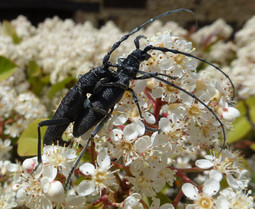
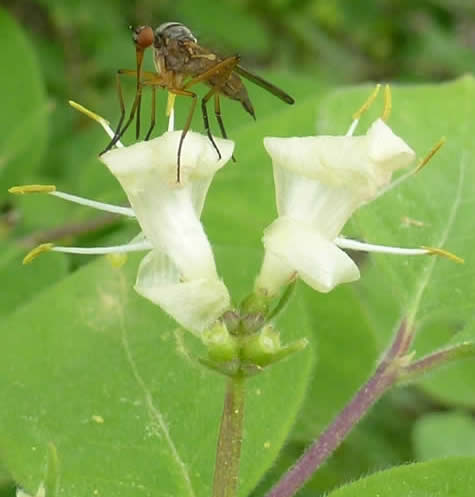
These longhorn beetles Cerambyx scopolii (left) were on a flowering shrub outside's Castang's back door. On the right, I went to take a close-up of fly honeysuckle at Berbiguières and found this rather scary looking dagger fly (or dance fly) Empis livida (we think).
Ascalaphids quarter meadows, rather in the style of a dragonfly, which makes sense as they are a predator. Taxonomically close to lacewings and ant-lions, the French name papillon libellule is apt: the dragonfly butterfly.
God has "an inordinate fondness for beetles" (biologist J B S Haldane, Wikiquotes). Space precludes analysing his theological or anti-theological angle on this, but the rich variety of beetles is illustrated by those on this page. The bloody-nosed beetle produces a red liquid when touched on the nose. The clumsy flight of rose chafers, here on dogwood, is more than offset by their intense, iridescent green colour. More beetles on the right and in the red-and-black strip.
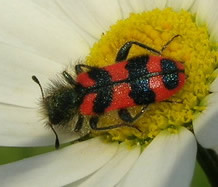
Left to right: Fire bug nymphs Pyrrhocoris apterus, soldier beetle Trichodes alvearius, froghopper Cercopis vulnerata. More red and black bugs here.
Field crickets are the noisiest invertebrate around Castang. Though mostly out of sight in vegetation, sometimes like this female (note the ovipositor) they wander across roads.
Right: squash bugs |
Left: looking up and into the larval chambers of a paper wasp nest. This was in the dry under a sign above Le Bugue. |
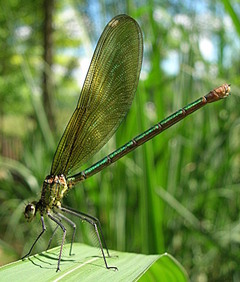
Micro-moths can be tricky to name, and on the left is Adela sp,, a longhorn moth, perhaps Adela reaumurella. Middle: underside of cream-spot tiger moth. Right: banded demoiselle, a female, lacking the dark patch on the wing.
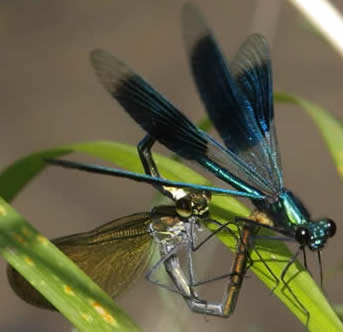
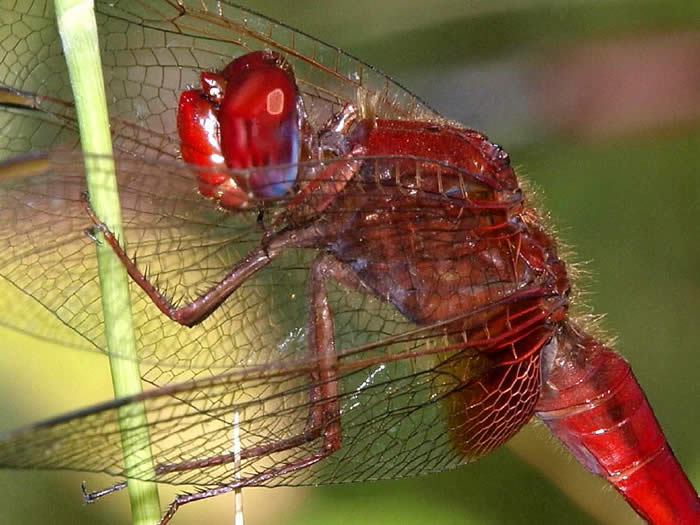
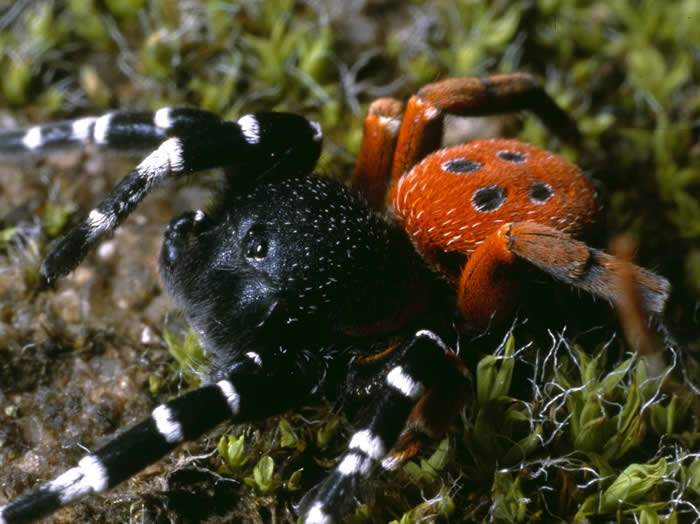
And finally, three photos by Herbert Schirmer, a German photographer keen on entomology; he was at Castang and sent his pics to Keith & Cathy. Left: mating banded demoiselles. Middle: scarlet darter. Right: ladybird spider.
Chris Durdin, January 2012
Dordogne orchids . . . . . . Dordogne butterflies . . . . . . Back to nature notes


